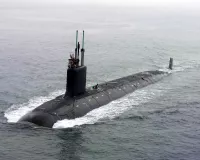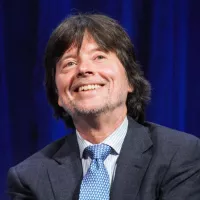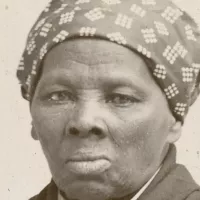The Union of Soviet Socialist Republics (USSR) existed from 1922 to 1991, becoming the largest country by area, spanning Eurasia and sharing borders with twelve countries. It was nominally a federal union of national republics, with the Russian SFSR being the largest. The USSR operated as a highly centralized, one-party state governed by the Communist Party of the Soviet Union (CPSU). Its capital was Moscow, and it served as a prominent communist state.
1905: First Appearance of Soviets
During the 1905 Russian Revolution, workers' councils known as Soviets first appeared.
1917: Emergence of Workers' and Soldiers' Soviets
After the February Revolution of 1917, workers' and soldiers' Soviets emerged throughout the country, sharing power with the Russian Provisional Government.
1917: State Council
From 1810 to 1917, during the Russian Empire, the State Council functioned as a Council of Ministers.
1917: Operating religious establishments
In 1917 most of churches, synagogues and mosques were operating.
1917: Women Granted the Right to Vote
In 1917, Russia became the first great power to grant women the right to vote.
1917: Health Conditions Before the Revolution
In 1917, before the revolution, health conditions in Russia were significantly behind those of developed countries.
1917: October Revolution
In 1917, the October Revolution led by Vladimir Lenin established the Russian SFSR, the world's first constitutionally socialist state.
October 1918: Liberalization of Laws
Beginning in October 1918, Lenin's government liberalized divorce and abortion laws, decriminalized homosexuality, permitted cohabitation, and ushered in a host of reforms.
1918: Turkestan
1918–24 Turkestan
1918: Secular State Decree
In 1918, the Council of People's Commissars decree established the Russian SFSR as a secular state and forbade the teaching of religion in general instruction.
1918: Creation of the Soviet Health Care System
In 1918, the Soviet health care system was conceived by the People's Commissariat for Health under the Semashko model, providing free health care to citizens controlled by the state.
March 1919: Hungarian Soviet Republic
In March 1919, the Hungarian Soviet Republic was established and lasted until August.
August 1919: End of Hungarian Soviet Republic
In August 1919, the Hungarian Soviet Republic came to an end.
1919: Bashkir
1919–90 Bashkir
1920: Kirghiz and Tatar
1920–25 Kirghiz1920–90 Tatar
1921: Nakhichevan
1921–90 Nakhichevan
1921: Adjarian, Crimean, Dagestan, Mountain and Nakhichevan
1921–91 Adjarian1921–45 Crimean1921–91 Dagestan1921–24 Mountain1921–90 Nakhichevan
1921: Realization of Capitalism Stabilization
By 1921, Lenin, Trotsky, and Stalin realized that capitalism had stabilized in Europe and that widespread revolutions were unlikely.
1921: Famine of 1921-1922
Excess deaths throughout World War I and the Russian Civil War (including the famine of 1921–1922 that was triggered by Lenin's war communism policies) amounted to a combined total of 18 million.
1921: Implementation of the New Economic Policy (NEP)
In 1921, Vladimir Lenin replaced the policy of war communism with the New Economic Policy (NEP), which legalized free trade and private ownership of small businesses.
December 1922: Treaty on the Creation of the USSR
In December 1922, the Treaty on the Creation of the USSR was signed by the founding republics.
1922: Yakut
1922–91 Yakut
1922: Georgian Affair
During the Georgian Affair of 1922, Lenin proposed the formation of a greater union of Soviet republics.
1922: Famine of 1921-1922
Excess deaths throughout World War I and the Russian Civil War (including the famine of 1921–1922 that was triggered by Lenin's war communism policies) amounted to a combined total of 18 million.
1922: Formation of the Soviet Union
In 1922, the Russian SFSR and its subordinate republics were merged into the Soviet Union.
1922: UK Opens Trade Relations
In 1922, the United Kingdom opened trade relations and de facto diplomatic recognition with the Soviet Union.
1923: Buryat
1923–90 Buryat
1923: Establishment of Dynamo Proletarian Sports Society
In the summer of 1923, the Proletarian Sports Society "Dynamo" was established in Moscow as a sports organization of the Soviet secret police Cheka.
1924: Karelian and Moldavian
1924–40 Moldavian
1924: Rise of Joseph Stalin
Following Lenin's death in 1924, Joseph Stalin came to power in the Soviet Union.
1924: National Delimitation in Central Asia
In 1924, during the national delimitation in Central Asia, Uzbekistan and Turkmenistan were formed from parts of Russia's Turkestan ASSR and two Soviet dependencies, the Khorezm and Bukharan PSPs.
1924: Formal Recognition by UK
In 1924, formal recognition of the USSR came when the new Labour Party came to power in the United Kingdom.
1924: Promulgation of the Constitution
In 1924, the constitution was promulgated in the Soviet Union but did not limit state power, and there was no formal separation of powers.
July 1925: Party Tasks in Physical Culture Statement
In July 1925, the Central Committee of the Russian Communist Party (Bolsheviks) adopted a statement "About the party's tasks in sphere of physical culture". This statement defined the role of physical culture in Soviet society and the party's tasks in the political leadership of the physical culture movement.
September 1925: Military Law
Under the Military Law of September 1925, the Soviet Armed Forces consisted of the Land Forces, the Air Force, the Navy, Joint State Political Directorate (OGPU) and the Internal Troops.
1925: Chuvash
1925–92 Chuvash
1925: Founding of the League of Militant Atheists
In 1925, the Soviet government founded the League of Militant Atheists to intensify the propaganda campaign against religion.
1926: Kazakh and Kirghiz
1926–36 Kirghiz
1926: Decreasing Birth and Mortality Rates
In 1926, the birth rate in the USSR was 44.0 per thousand, while the mortality rate was 23.7 per thousand.
1927: Totalitarian State
From 1927 the Soviet Union became a totalitarian state where freedom of speech was suppressed and dissent was punished.
1927: Number of Orthodox churches
In the period between 1927 and 1940, the number of Orthodox Churches in Russia fell from 29,584 to less than 500 (1.7%).
1928: Comparison to countries with similar per-capita GDP
Compared to countries with similar per-capita GDP in 1928, the Soviet Union experienced significant growth.
1928: Abandonment of NEP
In 1928, Stalin abandoned the New Economic Policy (NEP) and pushed for full central planning.
1928: Liquidation and Deportation of Peasants
In 1928, the liquidation and deportation of millions of peasants began within the terms of the Soviet Civil Code.
1929: Full Central Planning
By 1929, Stalin gained control of the country and pushed for full central planning, starting forced collectivization of agriculture and enacting draconian labour legislation.
1929: Restrictions on Church Activities
In 1929, express prohibitions were adopted on a range of church activities, including meetings for organized Bible study.
1930: Collectivization and Famine Begins
Between 1930 and 1933, Stalin's policies of rapid industrialization and forced collectivization led to a famine that caused millions of deaths in the Soviet Union.
1931: Abkhaz
1931–92 Abkhaz
1932: Karakalpak
1932–92 Karakalpak
1932: Re-criminalization of Homosexuality
In 1932, the decriminalization of homosexuality was reversed.
1933: Famine Continues
Between 1930 and 1933, Stalin's policies of rapid industrialization and forced collectivization led to a famine that caused millions of deaths in the Soviet Union.
1933: US Officially Recognizes USSR
In 1933, the United States officially recognized the USSR, a decision backed by public opinion and US business interests.
1934: Mordovian and Udmurt
1934–90 Udmurt
1934: Popular Front Program
In 1934, Stalin reversed his policy with the Popular Front program, calling on Marxist parties to join with anti-Fascist forces.
1934: OGPU Joins NKVD
In 1934, the OGPU became independent and joined the NKVD secret police.
May 1935: Franco-Soviet Treaty
In May 1935, the Franco-Soviet Treaty of Mutual Assistance was signed as Nazi Germany's power grew.
1935: Kalmyk
1935–43 Kalmyk
1935: Extension of Death Penalty
In 1935, Under Joseph Stalin, the death penalty was extended to adolescents as young as 12 years old.
1936: Checheno-Ingush, Kabardino-Balkarian, Komi and Mari
1936–44 Kabardino-Balkarian1936–90 Komi1936–90 Mari
1936: North Ossetian
1936–90 North Ossetian
1936: Reversal of Liberal Laws
By 1936, Stalin reversed most of the liberal laws, ushering in a pronatalist era that lasted for decades.
1936: Change of Order in Republic Names
In 1936, all republics began as socialist soviet.
1936: Dissolution of Transcaucasian SFSR
In 1936, the Transcaucasian SFSR was dissolved, resulting in Armenia, Georgia, and Azerbaijan being elevated to Union Republics.
1936: Promulgation of the Constitution
In 1936, the constitution was promulgated in the Soviet Union but did not limit state power, and there was no formal separation of powers.
1937: Mass Shooting of Orthodox Priests
More than 85,000 Orthodox priests were shot in 1937 alone.
1939: Nonaggression Pact with Nazi Germany
In 1939, the Soviet Union and Nazi Germany signed a nonaggression pact.
March 1940: Formation of Karelo-Finnish SSR
In March 1940, after the Soviet invasion of Finland, the Karelo-Finnish SSR was formed on annexed territory.
1940: Elimination of Illiteracy Announced
By 1940, Stalin announced that illiteracy had been eliminated in the Soviet Union.
1940: Closure of Religious Establishments
By 1940, as many as 90% of the churches, synagogues, and mosques that had been operating in 1917 were closed in the Soviet Union; the majority were demolished or re-purposed.
1940: Number of Orthodox churches
In the period between 1927 and 1940, the number of Orthodox Churches in Russia fell from 29,584 to less than 500 (1.7%).
1941: Stalin's Authority
After 1941, Stalin exercised his authority directly through his position in the Council of Ministers rather than the Politburo.
1941: Remaining Open Churches
By 1941, only 500 churches remained open out of about 54,000 in existence before World War I.
1941: Decline in Functioning Priests
By 1941, only a twelfth of the Russian Orthodox Church's priests were left functioning in their parishes.
1941: Excess Deaths during WWII
Excess deaths during World War II (1941–1945) amounted to more than 20 million.
1943: Meeting between Stalin and Orthodox Church Leader
In 1943, a historic meeting between Stalin and Orthodox Church leader Patriarch Sergius of Moscow was held, marking a shift towards a more moderate religion policy.
1944: Kabardin
1944–57 Kabardin
1945: Excess Deaths during WWII
Excess deaths during World War II (1941–1945) amounted to more than 20 million.
1945: Bordering Countries
From 1945 to 1991, USSR bordered Afghanistan, the People's Republic of China, Czechoslovakia, Finland, Hungary, Iran, Mongolia, North Korea, Norway, Poland, Romania, and Turkey.
1945: Beginning of the Cold War
In 1945, following World War II, the Cold War began as a period of geopolitical tension between the United States and the Soviet Union and their allies.
1946: Council of Ministers
Before 1946, the Council of Ministers was known as the Council of People's Commissars.
1946: People's Commissariat for Foreign Affairs Renamed
In 1946, the People's Commissariat for Foreign Affairs was renamed the Ministry of Foreign Affairs.
1948: Rejection of Human Rights Declaration
In 1948, the USSR and other countries in the Soviet Bloc abstained from affirming the Universal Declaration of Human Rights.
April 1951: Formation of Soviet Olympic Committee
In April 1951, the Soviet Olympic Committee was formed. The IOC recognized the new body in its 45th session. Also in 1951, Soviet representative Konstantin Andrianov became an IOC member, and the USSR officially joined the Olympic Movement.
1952: Presidium Called
Between 1952 and 1966, Politburo was called the Presidium.
1952: First Olympic Games for Soviet Athletes
In 1952, the Summer Olympics in Helsinki became the first Olympic Games for Soviet athletes. The Soviet Union emerged as a major rival to the United States at the Summer Olympics.
1953: Stalin as Premier
From 1941 to 1953, Stalin was the Premier of the Communist Party.
1953: First Secretary
From 1953 to 1966, the general secretary was known as the First Secretary, the de facto highest office in the Soviet Union.
1953: End of Totalitarian State
In 1953 the Soviet Union ended its period as a totalitarian state.
1953: Death of Stalin
In 1953, Joseph Stalin died, and he had controlled all foreign relations of the Soviet Union during the interwar period.
1953: De-Stalinization Under Khrushchev
In 1953, following Stalin's death, Nikita Khrushchev initiated a campaign of de-Stalinization in the Soviet Union.
1953: Suppression of uprising in East Germany
In 1953, the Soviet Army was directly involved in suppressing the uprising in East Germany.
1954: Soviet National Ice Hockey Team Dominance Begins
Beginning in 1954, the Soviet Union national ice hockey team began its era of dominance, winning nearly every world championship and Olympic tournament until 1991.
1955: Formation of the Warsaw Pact
In 1955, the Soviet Union formed its own military alliance, the Warsaw Pact, in response to NATO.
July 1956: Karelo-Finnish SSR Incorporated into Russia
In July 1956, the Karelo-Finnish SSR was incorporated into Russia as the Karelian ASSR.
1956: Karelian
1956–91 Karelian
1956: Suppression of Hungarian Revolution
In 1956, the Soviet Army was directly involved in suppressing the Hungarian Revolution.
1957: Checheno-Ingush and Kabardino-Balkarian
1957–91 Kabardino-Balkarian
1958: Kalmyk
1958–90 Kalmyk
1958: Khrushchev as Premier
From 1958 to 1964, Khrushchev was the Premier of the Communist Party.
1958: State Leadership Clashes with Churches
In 1958, under Nikita Khrushchev, the state leadership clashed with the churches, a period when atheism was emphasized in education.
1959: Formation of Strategic Missile Forces
After World War II, Strategic Missile Forces were formed in 1959.
1959: Decline in Number of Churches
From 1959 to 1965, the number of churches fell from 20,000 to 10,000.
1960: Economic Growth
Between 1960 and 1989, the growth rate of per capita income in the Soviet Union was slightly above the world average.
April 1961: First human in space
On 12 April 1961, the USSR launched Vostok 1, which carried Yuri Gagarin, making him the first human to ever be launched into space and complete a space journey.
1961: Tuvan
1961–92 Tuvan
1963: Chinese Criticism of the USSR
In 1963, the Chinese government articulated its criticism of the USSR's system and promoted China's ideological line as an alternative during the Sino-Soviet Split.
1964: Khrushchev as Premier
From 1958 to 1964, Khrushchev was the Premier of the Communist Party.
1964: State Leadership Clashes with Churches
In 1964, under Nikita Khrushchev, the state leadership clashed with the churches, a period when atheism was emphasized in education.
1964: Leonid Brezhnev Rulership Start
In 2018, a Rating Sociological Group poll showed that 47% of Ukrainian respondents had a positive opinion of Soviet leader Leonid Brezhnev, who ruled the Soviet Union from 1964 to 1982.
1965: Decline in Number of Churches
From 1959 to 1965, the number of churches fell from 20,000 to 10,000.
1965: Reform of 1965
In 1965, an attempt was made to legalize some elements of the decentralized economy with the reform of 1965.
1966: Politburo
Between 1952 and 1966, Politburo was called the Presidium.
1966: International Covenant on Economic, Social and Cultural Rights
In 1966, the International Covenant on Economic, Social and Cultural Rights was signed by the Soviet Union, but they were neither widely known or accessible to people living under Communist rule, nor were they taken seriously by the Communist authorities.
1968: Soviet Union Monopolizes Top Place in Medal Standings
After 1968, the Soviet Union monopolized the top place in the medal standings at the Olympics, until its collapse.
1968: Invasion of Czechoslovakia
In 1968, the Soviet Army was directly involved in the invasion of Czechoslovakia.
1970: Economic Growth Decline
After 1970, the economic growth, while still positive, steadily declined much more quickly and consistently than in other countries, despite a rapid increase in the capital stock.
1970: Formation of National Civil Defense Forces
After World War II, National Civil Defense Forces were formed in 1970.
1970: Decline in Fuel Need
From the 1970s to the 1980s, the need for fuel declined in the Soviet Union, both per ruble of gross social product and per ruble of industrial product. At the start, this decline grew very rapidly but gradually slowed down between 1970 and 1975.
1970: Increase in Infant Mortality Rate
In 1970, the infant mortality rate in the USSR was 24.7.
1973: Signing of Human Rights Documents
In 1973, the Soviet Union signed human rights documents, but they were not widely known or taken seriously by authorities.
1974: Government Stopped Publishing Statistics
After 1974, the Soviet government stopped publishing statistics on infant mortality.
1974: Decreasing Birth and Mortality Rates
By 1974, the birth rate in the USSR decreased to 18.0 per thousand, mainly due to increasing urbanization and the rising average age of marriages, while the mortality rate decreased to 8.7 per thousand.
1975: Decline in Fuel Need slows down
From the 1970s to the 1980s, the need for fuel declined in the Soviet Union, both per ruble of gross social product and per ruble of industrial product. From 1970 to 1975 the decline grew very rapidly but gradually slowed down between 1970 and 1975.
1977: Right to Health Protection
Article 42 of the 1977 Soviet Constitution gave all citizens the right to health protection and free access to any health institutions in the USSR.
1977: Promulgation of the Constitution
In 1977, the constitution was promulgated in the Soviet Union but did not limit state power, and there was no formal separation of powers.
1979: Participation in the War in Afghanistan
In 1979, the Soviet Union participated in the war in Afghanistan which continued until 1989.
1980: Decline in Fuel Need slows down even more
From the 1970s to the 1980s, the need for fuel declined in the Soviet Union, both per ruble of gross social product and per ruble of industrial product. From 1975 to 1980, the decline grew even slower, only 2.6%.
1982: Poll on Religious Believers
In 1982, a poll conducted by Soviet authorities indicated that 20% of the Soviet population identified as 'active religious believers'.
1982: Leonid Brezhnev Rulership End
In 2018, a Rating Sociological Group poll showed that 47% of Ukrainian respondents had a positive opinion of Soviet leader Leonid Brezhnev, who ruled the Soviet Union from 1964 to 1982.
1984: Statewide Doping System Plans Revealed
Documents obtained in 2016 revealed that in 1984, prior to the country's decision to boycott the Games, the Soviet Union planned for a statewide doping system in track and field in preparation for the 1984 Summer Olympics in Los Angeles.
1984: Soviet Union Places Second in Winter Olympics
In the 1984 Winter games, the Soviet Union placed second, after another Eastern bloc nation, the GDR.
1985: Gorbachev's Reforms
In 1985, Mikhail Gorbachev became the leader of the Soviet Union and sought to reform the country through his policies of glasnost and perestroika.
1986: Study on Quality of Life
In 1986, a study published in the American Journal of Public Health claimed that, citing World Bank data, the Soviet model provided a better quality of life and human development than market economies at the same level of economic development in most cases.
1986: Chernobyl Disaster
In 1986, the Soviet Chernobyl disaster occurred, resulting in a large number of radioactive isotopes being released into the atmosphere.
1986: Higher Education Statistics
In 1986, the number of higher education students per 10,000 people was 181 for the USSR, compared to 517 for the US.
1986: Start of Mir orbital station
In the late 1980s, the Soviet Union built the Mir orbital station. Mir was the only orbital station in operation from 1986 to 1998.
1987: Implementation of Perestroika
In 1987, Mikhail Gorbachev attempted to reform and revitalize the economy with his program of perestroika, relaxing state control over enterprises but not replacing it with market incentives, leading to a sharp decline in output.
1988: Gini Ratio increase following the dissolution
Between 1988 and 1989 and 1993–1995, the Gini ratio increased by an average of 9 points for all former Soviet republics.
1988: Gorbachev's Reforms
In 1988, Mikhail Gorbachev enacted reforms to shift power away from the highest bodies of the party due to considerable opposition.
1988: Peak Oil Production
In 1988, the Soviet Union was the largest producer and second-largest exporter of crude oil, surpassed only by Saudi Arabia.
1988: First Buran flight
In 1988, the first Soviet space shuttle, the Buran, flew, but without a human crew.
1988: Harmful Emissions in the Soviet Union
In 1988, total emissions in the Soviet Union were about 79% of those in the United States.
March 1989: Competitive Elections
In March 1989, the Congress of People's Deputies was established, with the majority of members directly elected in competitive elections for the first time in Soviet history.
1989: Russian Diaspora
According to the last census in 1989, the Russian 'diaspora' in the Soviet republics had reached 25 million.
1989: Per Capita Income
Between 1960 and 1989, the growth rate of per capita income in the Soviet Union was slightly above the world average.
1989: Gini Ratio increase following the dissolution
Between 1988 and 1989 and 1993–1995, the Gini ratio increased by an average of 9 points for all former Soviet republics.
1989: Soviet Scientists
By 1989, Soviet scientists were among the world's best-trained specialists in several areas, such as energy physics, selected areas of medicine, mathematics, welding, space technology, and military technologies.
1989: End of War in Afghanistan
In 1989, the Soviet Union concluded its participation in the war in Afghanistan.
1989: Military Strength
In 1989, the Soviet army consisted of two million soldiers divided between 150 motorized and 52 armored divisions. The navy had 500,000 men. The Strategic Missile Forces had more than 1,400 intercontinental ballistic missiles (ICBMs), deployed between 28 bases and 300 command centers in 1989.
1989: Ethnic Demography
In 1989, the ethnic demography of the Soviet Union showed that 69.8% was East Slavic, 17.5% was Turkic, and the remaining population was composed of Armenians, Balts, Uralic peoples, Tajiks, Georgians, Moldovans, and other various ethnic groups.
1989: Overthrow of Soviet-Backed Regimes
In 1989, various countries of the Warsaw Pact overthrew their Soviet-backed regimes, and nationalist movements erupted across the Soviet Union.
1990: Gorno-Altai
1990–91 Gorno-Altai
1990: Population Statistics
According to a 1990 estimate, the majority of the population in the Soviet Union were Russians (50.78%), followed by Ukrainians (15.45%) and Uzbeks (5.84%).
1990: End of One-Party State
In 1990 the Soviet Union ended its period as a one-party state.
1990: Gorbachev Becomes President
In 1990, Gorbachev introduced and assumed the position of President of the Soviet Union, concentrating power in his executive office.
1990: Russian Declared Official Language
In 1990, Russian assumed the de jure status as the official national language of the Soviet Union.
1990: Human Development Index
In 1990, the country had a Human Development Index of 0.920, placing it in the 'high' category of human development.
1990: Russian SFSR Branch of CPSU
Until 1990, the Russian SFSR had no republican branch of the CPSU, being ruled directly by the union-wide party.
August 1991: Failed Coup Attempt
In August 1991, a failed coup attempt against Gorbachev by hardline communists hastened the end of the Soviet Union.
September 1991: Existence of 15 Union Republics
Between July 1956 and September 1991, there were 15 union republics.
December 1991: Dissolution of the Soviet Union
In December 1991, the Soviet Union formally dissolved, ending nearly seven decades of Soviet rule.
1991: Crimean
1991–92 Crimean
1991: Increase in unemployment and male death rates
Between 1991 and 1994, Russia, Kazakhstan, Latvia, Lithuania, and Estonia experienced a tripling of unemployment and a 42% increase in male death rates.
1991: Bordering Countries
From 1945 to 1991, USSR bordered Afghanistan, the People's Republic of China, Czechoslovakia, Finland, Hungary, Iran, Mongolia, North Korea, Norway, Poland, Romania, and Turkey.
1991: Dissolution of the Soviet Union
From the 1930s until its dissolution in late 1991, the way the Soviet economy operated remained essentially unchanged. The economy was formally directed by central planning.
1991: Poor Dental Health and Technology
In 1991, Soviet dental technology and dental health were considered notoriously bad, with the average 35-year-old having 12 to 14 cavities, fillings or missing teeth.
1991: Positive Impression of the Soviet Union
In 1991, according to the New Russia Barometer (NRB) polls, 50% of Russian respondents reported a positive impression of the Soviet Union.
1991: Pipeline Network
In 1991, the Soviet Union had a pipeline network of 82,000 kilometres (51,000 mi) for crude oil and another 206,500 kilometres (128,300 mi) for natural gas.
1991: Cancellation of Ptichka
In 1991, the construction of another Soviet space shuttle, Ptichka, which endured prolonged construction, was canceled.
1991: Estimated Population
In 1991, the total population of the Soviet Union was estimated at 293 million.
1991: End of Soviet National Ice Hockey Team Dominance
Until 1991, the Soviet Union national ice hockey team won nearly every world championship and Olympic tournament between 1954 and 1991 and never failed to medal in any International Ice Hockey Federation (IIHF) tournament in which they competed.
1993: Gini Ratio increase following the dissolution
Between 1988 and 1989 and 1993–1995, the Gini ratio increased by an average of 9 points for all former Soviet republics.
1994: Increase in unemployment and male death rates
Between 1991 and 1994, Russia, Kazakhstan, Latvia, Lithuania, and Estonia experienced a tripling of unemployment and a 42% increase in male death rates.
1995: Gini Ratio increase following the dissolution
Between 1988 and 1989 and 1993–1995, the Gini ratio increased by an average of 9 points for all former Soviet republics.
1998: End of Mir operation as only orbital station
In the late 1980s, the Soviet Union built the Mir orbital station. Mir was the only orbital station in operation from 1986 to 1998.
2000: Increase in Positive Impression of the Soviet Union
By 2000, approximately 75% of NRB respondents reported a positive impression of the Soviet Union, up from 50% in 1991.
2000: Crash of the K-141 Kursk submarine
In 2000, the crash of the K-141 Kursk submarine raised concerns about radioactive hazards.
2001: Destruction of Mir orbital station
In 2001 it was decided to bring the Mir orbital station into the atmosphere where it burned down.
2005: Thyroid Cancer Cases
In 2005, it was reported that 4,000 new cases of thyroid cancer had resulted from the Chernobyl accident's contamination.
2009: Slight Drop in Positive Impression of the Soviet Union
In 2009, the percentage of NRB respondents with a positive impression of the Soviet Union dropped slightly to 71%, from 75% in 2000.
2012: Support for Soviet Union Dips Below 50 Percent
Since the dissolution of the Soviet Union, annual polling by the Levada Center has shown that over 50% of Russia's population regretted this event, with the only exception to this being in 2012 when support for the Soviet Union dipped below 50 percent.
2016: Reasons Cited for Soviet Nostalgia
According to the Levada Center's polls, in 2016, the primary reasons cited for Soviet nostalgia were the advantages of the shared economic union between the Soviet republics, including perceived financial stability. This was referenced by up to 53% of respondents.
2016: KGB Officer Reveals Doping Test Undermining
In 2016, British journalist Andrew Jennings reported that a KGB colonel stated that the agency's officers had posed as anti-doping authorities from the International Olympic Committee (IOC) to undermine doping tests during the Soviet era.
2018: Record Regret for Fall of Soviet Union
A 2018 poll showed that 66% of Russians regretted the fall of the Soviet Union, setting a 15-year record. The majority of these opinions came from people older than 55.
2018: Positive Opinion of Brezhnev in Ukraine
In 2018, a Rating Sociological Group poll showed that 47% of Ukrainian respondents had a positive opinion of Soviet leader Leonid Brezhnev, who ruled the Soviet Union from 1964 to 1982.
2020: Soviet Era Considered Greatest in Country's History
In 2020, polls conducted by the Levada Center found that 75% of Russians agreed that the Soviet era was the greatest era in their country's history.
2021: Record Favorable View of Stalin
In 2021, a record 70% of Russians indicated they had a mostly/very favorable view of Joseph Stalin. Also, a 2021 poll conducted by the Levada Center found that 49% of Russians prefer the USSR's political system, while 18% prefer the current political system and 16% would prefer a Western democracy.
Mentioned in this timeline
Ukraine is a large country in Eastern Europe second in...
Saudi Arabia officially the Kingdom of Saudi Arabia KSA is...

A submarine is a watercraft capable of independent operation underwater...
Azerbaijan is a transcontinental and landlocked country located in the...
The Guardian is a British daily newspaper founded in as...
Germany officially the Federal Republic of Germany is a Western...
Trending
8 days ago Google's AI Comeback: Benioff Switches to Gemini 3, OpenAI Feels the Pressure.

2 months ago Miles Teller Returns to Host SNL; Nikki Glaser & Glen Powell Debut

Damini Ebunoluwa Ogulu known as Burna Boy is a Nigerian singer songwriter and record producer He achieved fame in with...

2 days ago Caitlin Clark's soaring earnings: $114K WNBA salary, $16M sponsors despite injury in 2025.

6 months ago Ken Burns' documentary aims to unite US; Filmmakers emulate Burns' style.

7 months ago Kenan Thompson Addresses Constant Confusion With Kel Mitchell, Good Sport About Fan Mix-Ups
Popular
Matt and Ross Duffer known as the Duffer Brothers are...
Aftyn Alyssa Behn is an American politician currently serving as...

Candace Owens is an American conservative political commentator and author...

XXXTentacion born Jahseh Dwayne Ricardo Onfroy was a controversial yet...

Ilhan Omar is an American politician currently serving as the...

Harriet Tubman was a pivotal American abolitionist and social activist...